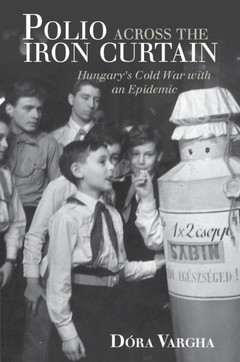Description
Polio Across the Iron Curtain
Hungary's Cold War with an Epidemic
Global Health Histories Series
Author: Vargha Dóra
Through the lens of polio, Dóra Vargha looks anew at international health, communism and Cold War politics. This title is also available as Open Access.
Language: English
Subject for Polio Across the Iron Curtain:
Approximative price 34.17 €
In Print (Delivery period: 14 days).
Add to cart
Polio Across the Iron Curtain
Publication date: 01-2021
Support: Print on demand
Publication date: 01-2021
Support: Print on demand
Approximative price 107.81 €
In Print (Delivery period: 14 days).
Add to cart
Polio Across the Iron Curtain
Publication date: 11-2018
320 p. · 15.8x23.5 cm · Hardback
Publication date: 11-2018
320 p. · 15.8x23.5 cm · Hardback
Description
/li>Contents
/li>Biography
/li>
By the end of the 1950s, Hungary became an unlikely leader in what we now call global health. Only three years after Soviet tanks crushed the revolution of 1956, Hungary became one of the first countries to introduce the Sabin vaccine into its national vaccination programme. This immunization campaign was built on years of scientific collaboration between East and West, in which scientists, specimens, vaccines and iron lungs crossed over the Iron Curtain. Dóra Vargha uses a series of polio epidemics in communist Hungary to understand the response to a global public health emergency in the midst of the Cold War. She argues that despite the antagonistic international atmosphere of the 1950s, spaces of transnational corporation between blocs emerged to tackle a common health crisis. At the same time, she shows that epidemic concepts and policies were influenced by the very Cold War rhetoric that medical and political cooperation transcended. This title is also available as Open Access.
Introduction; 1. The power of polio; 2. Iron Curtain, iron lungs; 3. Unlikely allies; 4. Local failure in a global success; 5. Sabin saves the day; 6. After the end of polio; Conclusion: Eastern Europe in global health history.
Dóra Vargha is Lecturer in Medical Humanities at the University of Exeter. Her research has been awarded the J. Worth Estes Prize by the American Association for the History of Medicine, and the Young Scholar Book Prize by the International Committee for the History of Technology.
© 2024 LAVOISIER S.A.S.

